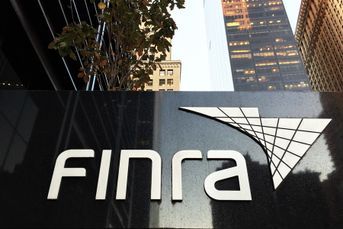LifeYield provides advisers a roadmap to optimize portfolio tax efficiency

After determining a client is paying unnecessary taxes, LifeYield will recommend specific trades.
LifeYield, a technology firm focused on social security optimization and tax efficiency, has a new feature to help advisers explain to clients the tax benefits of asset relocation.
Taxficient Asset Location Swaps is an update to LifeYield’s Taxficient Score, a product the fintech company introduced in 2018 to quantify the tax efficiency of a portfolio. After the algorithm determines the portfolio is losing out on some tax advantages, it will now create a step-by-step roadmap of specific trades an adviser can recommend to improve tax outcomes.
LifeYield will quantify in dollars the impact asset relocation will have on clients’ taxes and prioritize which trades will have the most impact.
For example, a LifeYield analysis of a $1.2 million household with a traditional 60/40 allocation finds the portfolio could improve tax efficiency by 0.42% annually. The first step the tool recommends is selling a $200,000 actively managed position sitting in a taxable account and using cash from the sale to make a $200,000 purchase of municipal bonds in the taxable account.
Next, it recommends selling $200,000 worth of taxable intermediate bonds from a tax-deferred account and using the cash to buy back the same actively managed position. This swap alone would maintain the initial target asset allocation and improve the portfolio’s tax efficiency by 43%, saving the client $67,000 in taxes over 15 years, said Steve Zuschin, LifeYield’s executive vice president and head of direct-to-adviser sales.
(More: The only certainty is death, taxes, and muni advantages)
“Historically, the advisers never had something to justify [the trades] other than just saying it’s a good idea,” Mr. Zuschin said. This tool can be especially valuable if an adviser sees an opportunity for long-term benefit that could involve some immediate gains. By quantifying how much they will save in the long-term, it will be “a little bit easier to swallow that advice” and “pay the tax bill” now.
“Even if the adviser is already doing a really great job, we’re giving a tool to help communicate it to the client,” he said.
Mr. Zuschin also believes the software will help advisers trying to do tax-loss harvesting for clients by determining where to move certain assets and what to replace them with.
However, asset location hasn’t been widely adopted across the financial advice industry, said Anton Honikman, CEO of fintech provider MyVest. Advisers are limited by the orthodoxy of managing within a single account, and many vendors haven’t developed algorithms sophisticated enough to handle the details.
(More: The AMT is no longer a problem for many clients)
“But given the unique value of capturing tax alpha, we welcome any substantive move in our industry towards broader adoption of this practice,” Mr. Honikman said. “I think we’ll be seeing increased use of asset location, as goals-based wealth management and multi-account portfolios continue to grow in our industry.”
According to LifeYield CEO and co-founder Mark Hoffman, most household portfolios have a Taxficient Score of 52 out of 100, meaning they are only half as tax-efficient as they could be.
“Many investors don’t realize they are paying unnecessary taxes, largely because they own multiple accounts and products with different tax treatments managed by two or three advisers,” he said in a statement. “Few households are coordinated in a tax-efficient way mostly because they are unaware of the value of, or don’t understand the complexities of, tax-smart asset location.”
Advisers are also struggling to maximize tax efficiency across all asset types, and changes in tax policy are driving demand for asset location platforms that can improve after-tax returns, said Kapin Vora, partner and head of consultancy firm Capco’s U.S. wealth management practice.
“We believe this is a brilliant investment in their platform and will yield them a great return,” Mr. Vora said.
The product is available now to independent advisers. LifeYield will also make the feature available to financial institutions and its fintech vendors partners.
(More: How Tamarac grew from fintech startup to $1.2 trillion behemoth)
Morgan Stanley, which uses LifeYield as part of its Wealthdesk technology platform for advisers, declined to comment.
Learn more about reprints and licensing for this article.








